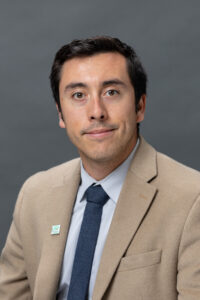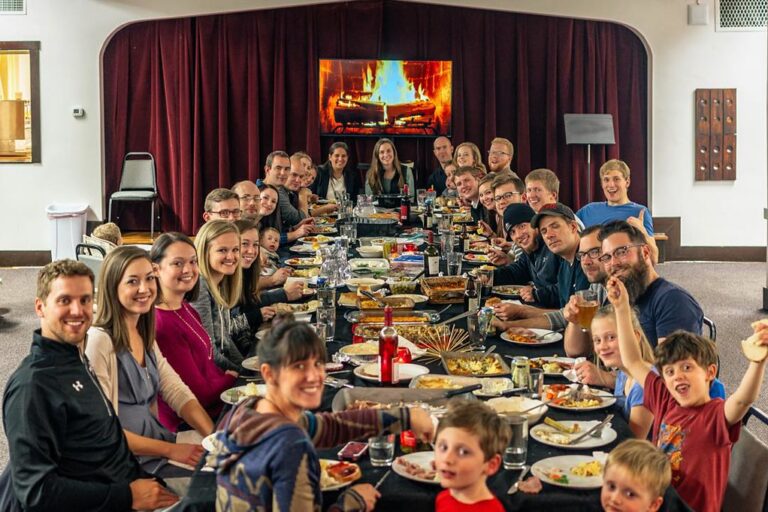UAS Summit and Expo showcases UND projects, research
University has been at forefront of UAS’ growth across state and region
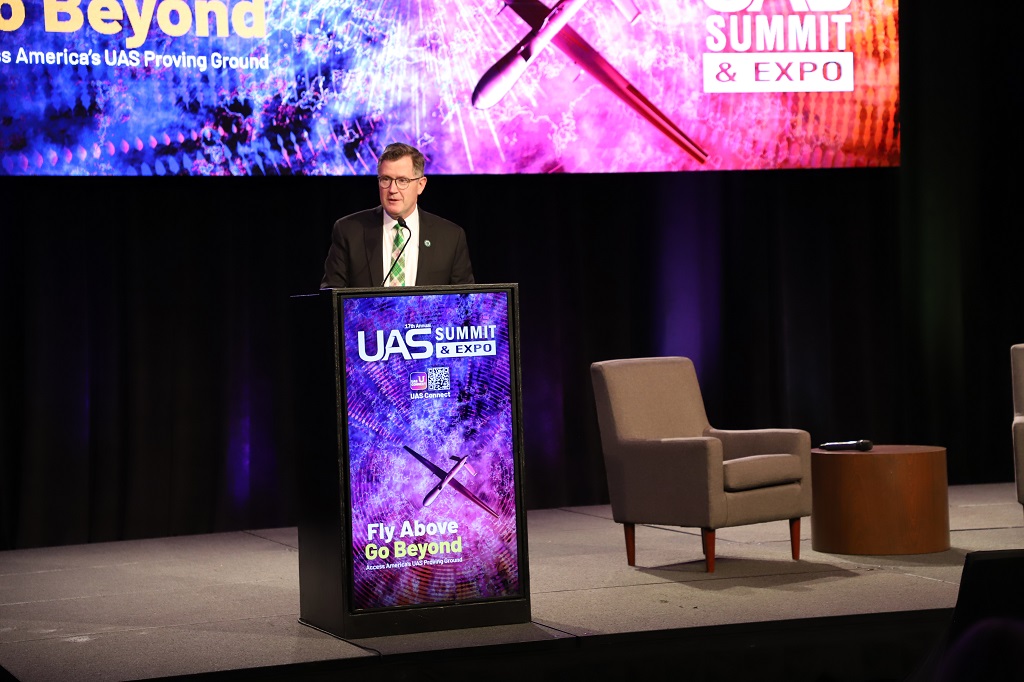
Industry professionals, military leaders and academics gathered for the 17th annual UAS Summit and Expo in early October, for an in-depth look at the wide range of applications supported by the sector.
With 760 registered guests attending from 36 states and five countries, the event was the largest in its history, according to organizers.
In his remarks last Wednesday, UND President Andrew Armacost praised the innovative spirit of the industry’s leaders, expressing amazement at the technological advances on display with each passing summit.
“People outside the industry might believe that making autonomous or AI-based systems just happens,” he said. “Yet here we are now, years into the development of operating beyond visual line of sight systems, and every year we make additional progress. It doesn’t happen with the snap of a finger.”
Armacost also impressed upon attendees the importance of addressing the myriad ethical questions surrounding artificial intelligence, referencing ChatGPT co-creator Greg Brockman’s recent visit to campus.
“We do need to position ourselves to responsibly and ethically adapt to AI, autonomous systems and technologies that are being developed and offered,” he said. “And what better way to do this than to bring to campus a mainstay in this field. He (Brockman) mentioned to me that when it comes to creating something new, that education can yield a spark of creativity. As educators, we need to foster that creativity – what I’ve often called that sense of wonder that just reaches out and grabs you.”
Armacost said creating partnerships is vital for continued innovation in the field. He cited the Mountains and Plains Innovation Alliance – a memorandum of understanding between UND, North Dakota State University and other institutions in South Dakota, Idaho, Montana and Wyoming – as a potential to become “the engine that catalyzes autonomous systems development, and the fielding of such systems across a wide range of uses.”
Armacost also announced that UND recently received a $1 million engines grant from the National Science Foundation (NSF) from its participation in the alliance – one of the first such grants offered by the NSF. Additionally, the university has partnered with the U.S. Economic Development Administration (EDA) to assist in further commercializing the state’s UAS sector.
“UND is leading as a team across the five-state alliance, proposals related to AI and astronomical science,” he said. “Work with the NSF and EDA will push us to even greater heights with innovation and commercialization that impacts the state, region and entire nation.”
Deans of three of UND’s academic colleges, along with Mark Askelson, associate vice president for research – national security, appeared onstage Wednesday for a panel discussion about UAS’ connection to national security.
In its most recent biennial budget, the North Dakota Legislature appropriated $9 million to UND for continued development of the University’s Science, Engineering and National Security Corridor.
Brian Tande, dean of the College of Engineering & Mines, said the college plans to hire at least three new faculty members in the coming year – two focused on satellite design and another on hypersonics.
“We have a lot of capabilities and we’re continuing to grow them, because there’s a lot of need and opportunity for those,” he said.
Robert Kraus, dean of the John D. Odegard School of Aerospace Sciences, said UND has been at the forefront of UAS’ growth across the state and region, typified by the university being the first in the nation to offer a Bachelor of Science in Unmanned Aircraft Systems Operations.
Kraus added that a strength of the degree is a requirement that all graduates receive a single engine commercial pilot’s rating.
Askelson – who was appointed to his role in July 2022 – said UND is committed to educating the next generation of UAS professionals, many of whom remain in Grand Forks upon graduating to work in the field.
“I feel like we live in an almost unprecedented time from a demand standpoint for this type of talent,” he said. “We’re working as hard as we can to help provide that talent.”
Askelson also said it is critical for the U.S. and its allies to maintain a competitive advantage in the domain of space and autonomous systems.
“From a fundamental standpoint, there are some folks out there who aren’t always our friends,” he said. “A key piece to ensure that really bad things don’t happen is technological advantage. We know that space and hypersonics are a race. At the end of the day, we have to be smart enough to recognize where our adversaries are trying to go, what are they trying to exploit and how to ensure we don’t fall behind in key technological areas.”
Kraus said that artificial intelligence and autonomous systems are being deployed on battlefields across the globe, which shifts human effort to areas where it is most efficient.
“One of the fears that everybody has is the Terminator situation, where you have AI running a weapons system,” he said. “I think people today don’t understand how automated many of our weapons systems already are. As we think about the Iron Dome in Israel, there is a human consent that says, ‘you are able to fire defensive missiles at rockets coming at you, because humans cannot react fast enough.’ We have systems on our naval ships that shoot faster than a human possibly could. Where AI is useful is doing the things that are routine, or the things that humans are not the greatest at.”
U.S. Sen. John Hoeven received the summit’s inaugural Sky Pioneer Award, given to an individual who has made “groundbreaking contributions to the UAS industry.” His legislation was instrumental in directing the Federal Aviation Administration to establish six UAS test sites, the first being the Northern Plains UAS Test Site.
“This is a partnership like none other,” Hoeven said. “When our partners benefit, we grow and do great things. That’s our mantra, and that’s what we’ll continue to do.”
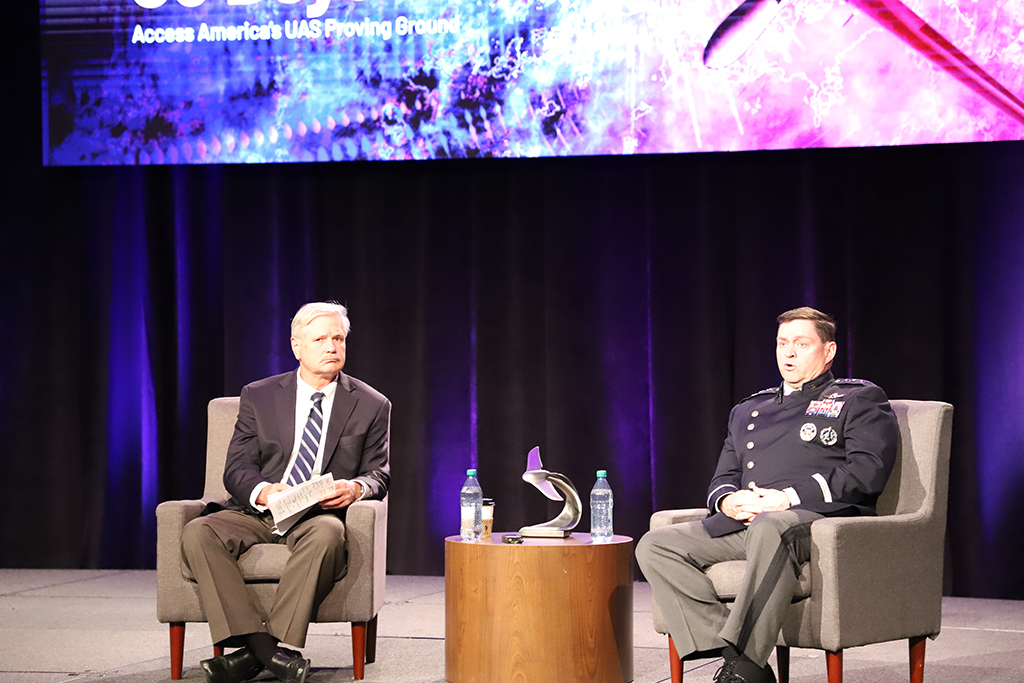
Col. Timothy Monroe, commander of the 319th Reconnaissance Wing at Grand Forks Air Force Base, said the base’s mission – which aids allies in both Europe and the Pacific — is bolstered by unwavering support from local leaders.
“We think, we lead, and we act beyond the confines of our installation, because our mission is global,” he said. “Not a week goes by that our community leaders don’t directly ask me ‘what can we do to help? How can we partner more effectively with one another?’”
U.S. Sen. Kevin Cramer echoed Monroe’s sentiments.
“North Dakota has strung together what I believe is one of the most diverse and important critical defense ecosystems in the nation,” he said. “We have a patriotic population, innovative educational institutions like right here at the University of North Dakota and forward thinking local, state and national leaders.”
Two members of the Joint Chiefs of Staff appeared onstage as guests of Hoeven and Cramer.
Gens. David Allvin and B. Chance Saltzman, acting chief of staff of the Air Force and chief of space operations for the U.S. Space Force, respectively, stressed the need for continued innovation and cooperation between their branches in the face of emerging threats.
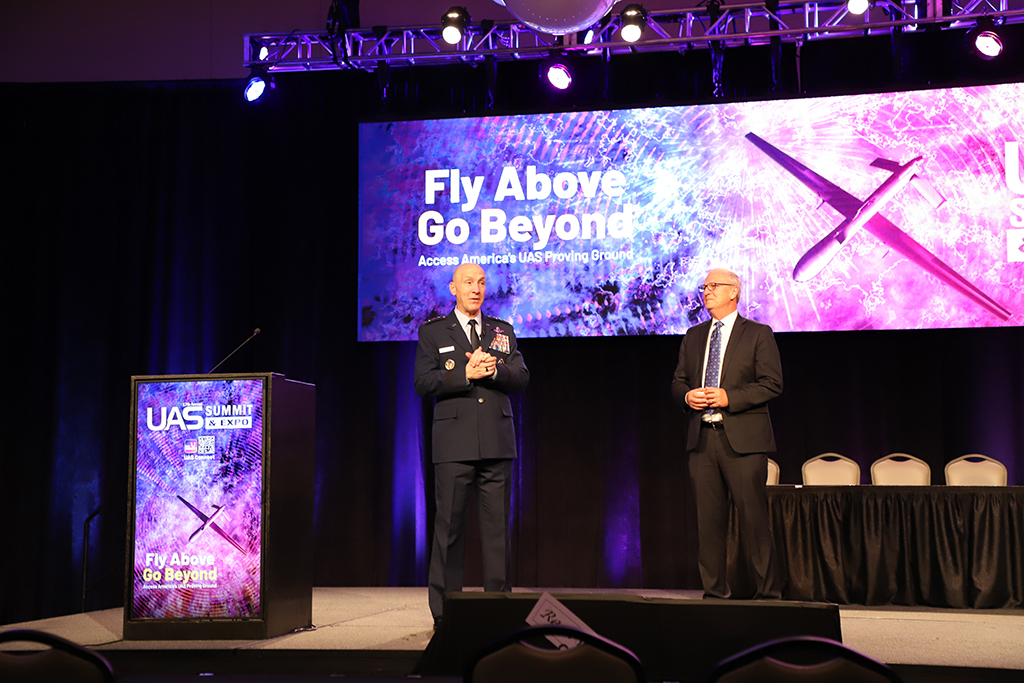
“Our space capabilities are so critical to what we are doing for the joint team, that now our strategic competitors are investing heavily to operationalize weapons that will deny, degrade and even destroy our space capabilities,” Saltzman said. “This is the same fight we’re having, we’re just shifting between domains and platforms. It’s vital that we work together to share best practices, share lessons learned and get this right.”
Allvin, who expressed fond memories of his past service at Grand Forks Air Force Base, said autonomous systems augment the human-centric decision making required by airmen.
“I would submit that one of the things that has made us airmen as much as the airplane, is the spirit of innovation,” he said. “If it helps the human make decisions better, be more effective and keep the adversary on their back foot, I think that is a fundamental core principle we should consider as we’re designing into rather than bolting on UAS technology. This is not the time to shy away — now is the time to lean into it heavily. I think if all we do that together as society — we’ll have a force the nation can be proud of.”
